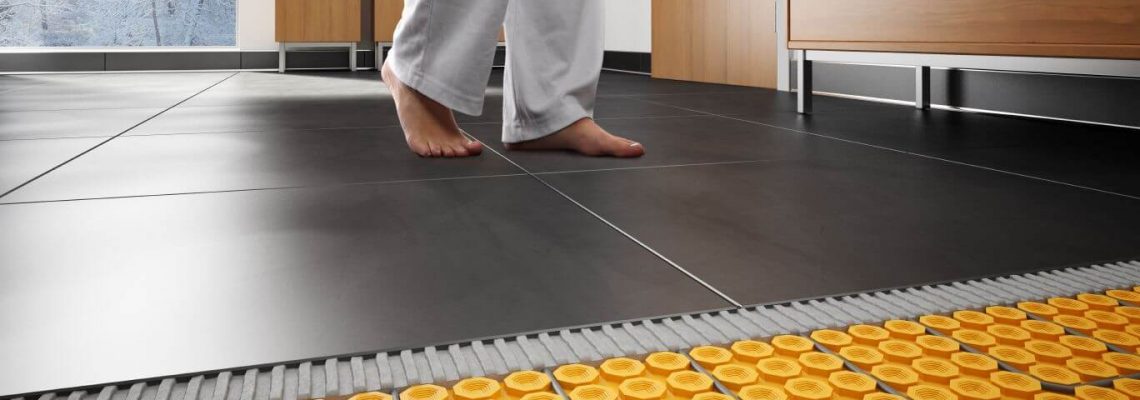Have you ever walked barefoot across a tiled floor and felt a chill that sent shivers down your spine? It’s a common experience, leading many to believe that tile flooring inherently makes a room feel colder. But is this perception a matter of fact or simply a sensory illusion?

Image: dragon-upd.com
The perceived temperature of a room is a complex interplay of various factors, and tile flooring is just one piece of the puzzle. This article delves into the science behind temperature perception, the characteristics of different flooring materials, and the factors that influence how we experience a room’s temperature. By understanding these intricacies, we can make informed choices about flooring materials to achieve a comfortable and cozy living space.
The Science of Temperature Perception
Our bodies are constantly exchanging heat with our surroundings. When we touch a surface, our skin senses the temperature difference between our body and the surface. This temperature difference is what we perceive as “cold” or “hot.” Tile, with its high thermal conductivity, conducts heat away from the body faster than other materials like carpet or wood. This rapid heat transfer creates the sensation of coldness, even if the air temperature is the same.
Thermal Conductivity: A Key Factor
Thermal conductivity measures a material’s ability to transfer heat. The higher the thermal conductivity, the faster heat can move through it. Tile boasts a high thermal conductivity, meaning it readily conducts heat away from our bodies. This explains why a tiled floor feels colder to the touch than a carpeted floor, even if both are in the same room.
The Role of Air Temperature
While tile’s high thermal conductivity contributes to the sensation of coldness, the actual air temperature also plays a significant role. If the air itself is cool, the tile’s cold feel is amplified. In contrast, if the air is warm, the perceived coldness of the tile is lessened. This is why you might not feel the same chill from a tiled floor in the summer as you do in the winter.

Image: www.tileideas.co.uk
Beyond Thermal Conductivity: Other Factors Affecting Perception
Besides thermal conductivity, other factors contribute to how we perceive a room’s temperature. These include:
- Air Circulation: Poor air circulation can cause cold spots, particularly near windows or doors.
- Radiant Heat: Radiators and fireplaces add warmth to a room, but the distribution of this heat can be uneven.
- Personal Preferences: Our individual sensitivity to temperature varies. Some people are naturally more susceptible to cold.
- Clothing: Wearing socks or slippers can help insulate your feet and reduce the sensation of coldness from tile.
Tile vs. Other Flooring Options
When considering flooring choices, it’s helpful to compare the thermal conductivity of different materials.
- Tile: High thermal conductivity, feels cold to the touch.
- Wood: Moderate thermal conductivity, feels warmer than tile but cooler than carpet.
- Carpet: Low thermal conductivity, feels warm and cozy due to its plush texture and insulating properties.
Creating a Comfortable and Cozy Space
While tile can contribute to a cool feeling, you can still enjoy its beauty and practicality by implementing strategies to mitigate the perceived coldness:
- Area Rugs: Strategically placed rugs can add warmth and comfort to a tiled floor, creating cozy zones within the room.
- Underfloor Heating: Installing underfloor heating beneath your tiles provides a consistent heat source, combating the chill.
- Insulation: Installing proper insulation in your walls and ceiling can help maintain consistent temperatures throughout the room.
Expert Insights for a Warmer Home
Architects and interior designers often recommend balancing warm and cool tones in a space. For instance, incorporating warm-colored furniture or accessories can visually counteract the perception of coldness associated with tile flooring.
Do Floor Tiles Make A Room Colder
In Conclusion
While tile flooring can make a room feel cooler, it’s important to remember that it’s not the sole determinant of temperature perception. Factors like air temperature, air circulation, radiant heat, and personal preferences all contribute to our experience of a room’s warmth. By understanding these factors, we can create a comfortable and cozy home regardless of our flooring choices. Embrace the elegance of tile flooring while implementing strategies to maintain a warm and inviting environment.





